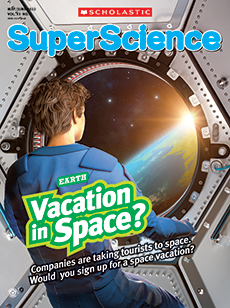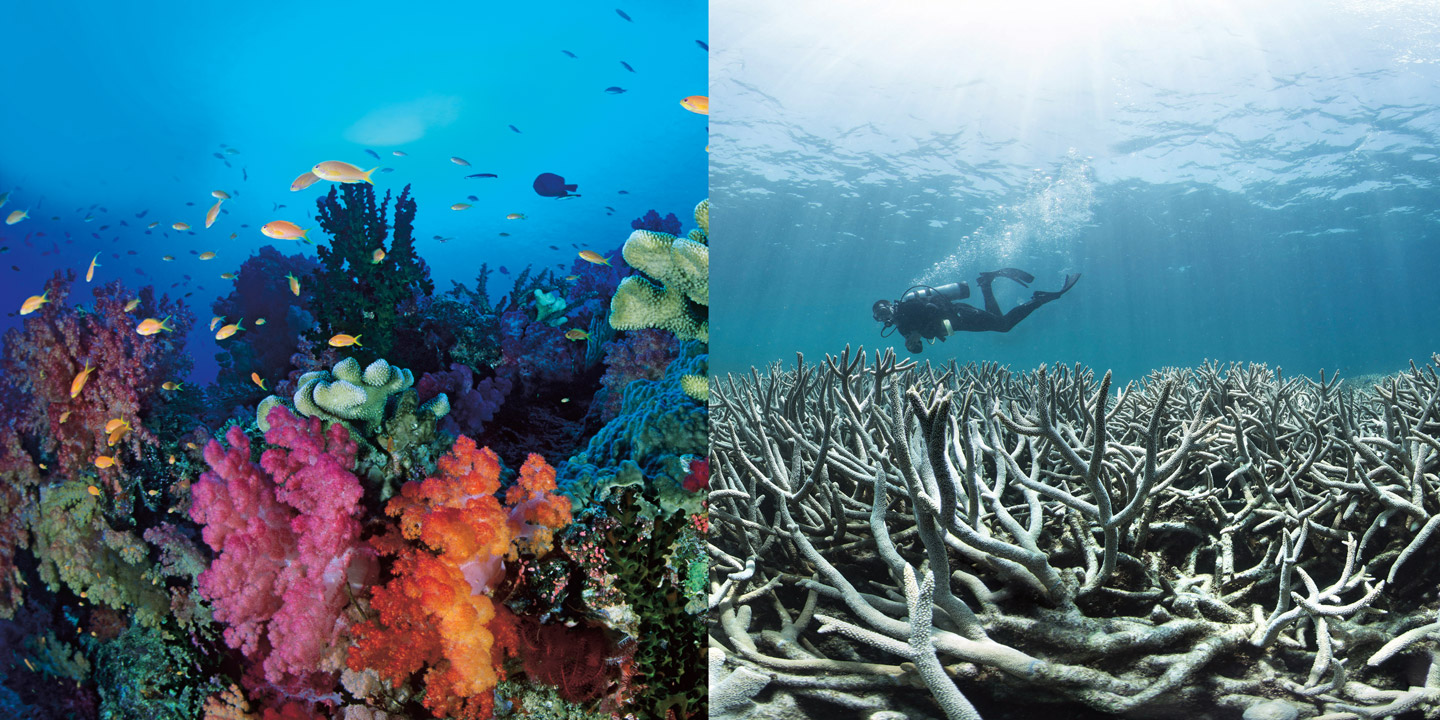JIM MCMAHON/MAPMAN®
Not far off the coast of eastern Australia lies the largest living structure in the world: the Great Barrier Reef. This colorful underwater habitat stretches 2,000 kilometers (1,200 miles) from end to end.
The reef is made of millions of individual corals. Corals look like plants, but they’re actually tiny animals that live in clusters. Their hard skeletons form reefs, which provide food and shelter for ocean animals (see How Corals Build Reefs). Normally, the Great Barrier Reef is teeming with fish, crabs, turtles, and other animals.
Recently, though, the world’s biggest reef has come under threat. It’s suffering from the largest-ever coral bleaching event, when corals get sick and turn white. Many of the corals won’t survive. Other reefs around the world—and the animals that live in them—are also in danger.
Marine biologist Ruth Gates has a plan to help save reefs. In an island lab at the University of Hawaii, she and her team are breeding corals that can survive bleaching. They hope that planting these super-corals in sick reefs could help the reefs recover.
The Great Barrier Reef is the world’s largest living structure. It’s found in the ocean near eastern Australia. The colorful reef stretches 2,000 kilometers (1,200 miles) from end to end.
The reef is made up of millions of living things called corals. Corals look like plants. But they’re actually tiny animals! They live in clusters. Their hard skeletons form reefs (see How Corals Build Reefs). Ocean animals use the reefs for food and shelter. The Great Barrier Reef is usually full of fish, crabs, turtles, and other animals.
But the Great Barrier Reef is in trouble. It recently suffered from coral bleaching. That’s when corals get sick and turn white. This time, more corals got sick than ever before.
Many of the corals won’t survive. Other reefs around the world are also in danger. That means the animals that live in them are in danger too.
Ruth Gates is an ocean biologist. She has a plan to help save reefs. She works in a lab at the University of Hawaii. Her team there raises special corals. These corals can survive bleaching. Gates hopes she can plant these super-corals in sick reefs in the future. That could help the reefs recover.

